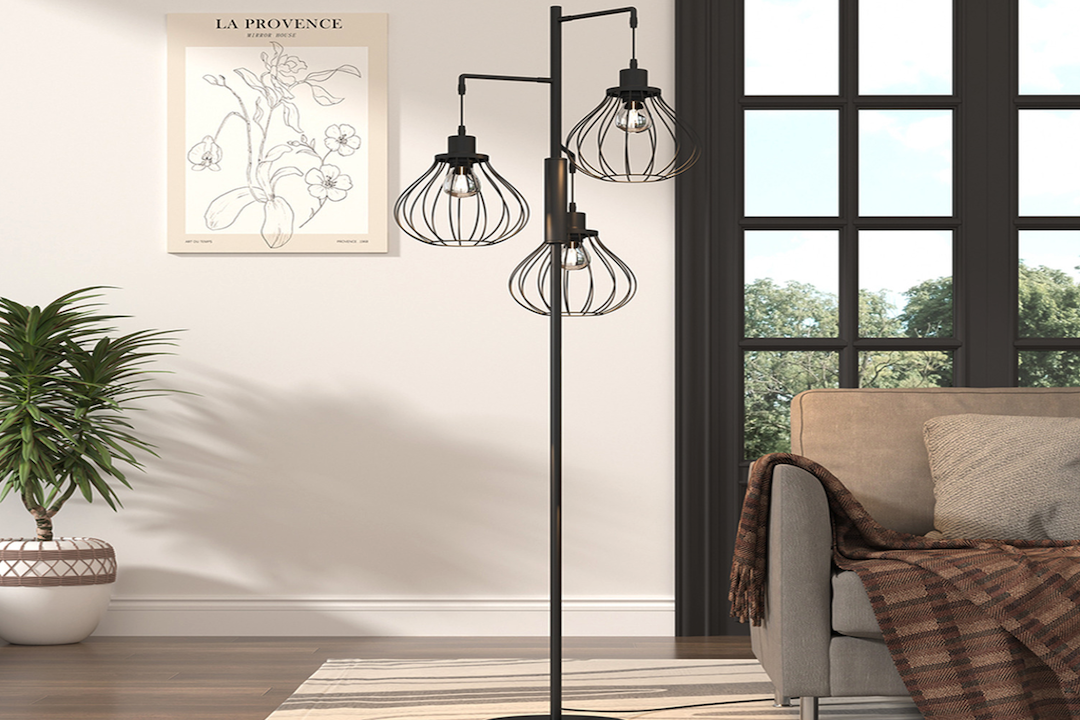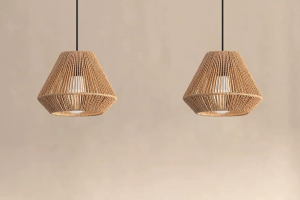Vintage charm encapsulates a sense of nostalgia, evoking memories of bygone eras while seamlessly integrating into contemporary aesthetics. This allure is not merely about age; it’s about the stories and craftsmanship that accompany each piece. Vintage items, particularly in home decor, often carry a unique character that mass-produced modern items lack.
They serve as conversation starters, each with its own history and personality, inviting admiration and curiosity from guests. The appeal of vintage charm lies in its ability to blend the old with the new, creating spaces that are both inviting and rich in narrative. In recent years, there has been a resurgence of interest in vintage decor, driven by a desire for authenticity in an increasingly homogenized world.
Homeowners and designers alike are drawn to the distinctive qualities of vintage pieces, which can add depth and warmth to any environment. Among the most captivating elements of vintage decor are wrought iron and glass items, particularly floor lamps Garralighting that embody the elegance and craftsmanship of earlier times. These pieces not only illuminate spaces but also serve as artistic statements that reflect personal style and appreciation for history.
The History of Wrought Iron
Wrought iron has a storied past that dates back thousands of years, with its origins tracing back to ancient civilizations. The term “wrought” comes from the Old English word “wrought,” meaning “worked,” which aptly describes the labor-intensive process of shaping iron into functional and decorative forms. The earliest known use of wrought iron can be found in artifacts from the Hittite civilization around 1200 BOver the centuries, wrought iron became a favored material due to its malleability and strength, allowing artisans to create intricate designs that were both beautiful and durable.
During the Middle Ages, wrought iron gained prominence in Europe, particularly in architectural elements such as gates, railings, and window grilles. Blacksmiths honed their skills, developing techniques that allowed for more elaborate designs. The Renaissance period saw a further evolution in wrought ironwork, with artisans incorporating ornate scrolls and motifs inspired by nature.
This era marked the transition from purely functional items to decorative art pieces, setting the stage for the exquisite wrought iron designs that would later influence modern decor. The craftsmanship involved in creating wrought iron pieces is a testament to the skill and dedication of artisans throughout history, making each item a unique representation of its time.
The Allure of Glass in Design
Glass has long been celebrated for its versatility and beauty in design. Its ability to refract light creates an ethereal quality that can transform a space, making it feel more open and inviting. From stained glass windows in Gothic cathedrals to sleek modern glass sculptures, this material has been utilized across various styles and periods.
In vintage decor, glass often serves as a focal point, drawing attention with its shimmering surfaces and intricate patterns. The interplay between glass and light can evoke emotions and set the mood within a room, making it an essential element in design. In the context of vintage charm, glass is often paired with materials like wrought iron to create stunning contrasts.
For instance, a wrought iron floor lamp featuring a glass shade can combine the ruggedness of metal with the delicacy of glass, resulting in a harmonious balance that enhances any interior. Vintage glass pieces often showcase unique craftsmanship, such as hand-blown techniques or intricate etchings that tell a story of their own. Collectors and enthusiasts appreciate these details, as they reflect the artistry and innovation of past eras while remaining relevant in contemporary design.
Exploring Retro Design Trends
Retro design trends have made a significant comeback in recent years, as people seek to infuse their spaces with character and individuality. The term “retro” typically refers to styles from the mid-20th century, particularly the 1950s through the 1970s, when bold colors, geometric patterns, and innovative materials dominated the design landscape. This era was marked by a sense of optimism and creativity, resulting in furniture and decor that were not only functional but also playful and expressive.
One notable trend within retro design is the revival of mid-century modern aesthetics, characterized by clean lines, organic shapes, and an emphasis on functionality. Furniture pieces from this period often feature materials like molded plastic, wood veneers, and metal accents. When combined with vintage wrought iron and glass elements, such as floor lamps or side tables, these designs create a striking juxtaposition that celebrates both form and function.
Additionally, the use of vibrant colors and bold patterns can breathe new life into spaces that may feel stale or uninspired.
The Versatility of Floor Lamps
Floor lamps are an essential component of interior lighting design, offering both illumination and style. Their versatility allows them to fit seamlessly into various design schemes, from minimalist to eclectic. Vintage floor lamps made from wrought iron and glass exemplify this adaptability; they can serve as statement pieces or subtle accents depending on their placement and design.
The height of floor lamps allows them to draw the eye upward, creating an illusion of space while providing ambient lighting that enhances the overall atmosphere. In addition to their aesthetic appeal, floor lamps also offer practical benefits. They can be used to highlight specific areas within a room, such as reading nooks or artwork displays.
Vintage floor lamps often feature adjustable arms or shades, allowing users to direct light where it is needed most. This functionality is particularly valuable in modern homes where open floor plans are common; strategically placed floor lamps can delineate spaces while adding warmth and character. The combination of wrought iron bases with glass shades not only provides durability but also allows for creative expression through various design styles.
Tips for Incorporating Vintage Charm into Modern Spaces
Incorporating vintage charm into modern spaces requires a thoughtful approach that balances old-world aesthetics with contemporary sensibilities. One effective strategy is to select key vintage pieces that serve as focal points within a room. For instance, a striking wrought iron floor lamp with a colorful glass shade can become a conversation starter while complementing modern furnishings.
When choosing vintage items, consider their scale and proportion relative to existing decor; oversized pieces can make bold statements in spacious areas, while smaller items can add subtle charm without overwhelming the space. Another tip is to mix vintage elements with modern accessories to create an eclectic yet cohesive look. Pairing a vintage wrought iron table with sleek contemporary chairs can create visual interest while maintaining functionality.
Additionally, incorporating textiles such as retro-patterned cushions or throws can enhance the vintage vibe without compromising comfort. Color palettes play a crucial role in this integration; selecting hues that resonate with both vintage pieces and modern decor can create harmony throughout the space. Ultimately, the goal is to curate an environment that reflects personal style while celebrating the beauty of vintage charm.
Caring for Wrought Iron and Glass
Maintaining the beauty of wrought iron and glass items requires specific care techniques tailored to each material’s unique properties. Wrought iron is known for its durability but can be susceptible to rust if not properly cared for. Regular cleaning with a soft cloth can help remove dust and prevent buildup that may lead to corrosion.
For outdoor wrought iron pieces exposed to the elements, applying a protective coating or paint can provide an additional layer of defense against moisture and rust. Glass components require careful handling to avoid scratches or breakage. Regular dusting with a microfiber cloth can keep glass surfaces sparkling without causing damage.
For deeper cleaning, using a gentle glass cleaner or a mixture of vinegar and water can effectively remove smudges without leaving streaks. It’s essential to avoid abrasive materials that could scratch the surface. When storing vintage glass items, wrapping them in soft cloths or bubble wrap can protect them from accidental impacts during transport or storage.
Where to Find Retro Wrought Iron Glass Floor Lamps
Finding retro wrought iron glass floor lamps can be an exciting treasure hunt for enthusiasts of vintage decor. Antique shops often house unique pieces with rich histories waiting to be discovered. These establishments typically curate collections from various eras, providing an opportunity to explore different styles and designs all in one place.
Flea markets are another excellent source for vintage finds; they offer an eclectic mix of items at varying price points, allowing shoppers to negotiate and uncover hidden gems. Online marketplaces have also become popular venues for sourcing retro decor items. Websites like Etsy feature numerous independent sellers who specialize in vintage goods, including wrought iron glass floor lamps.
These platforms allow buyers to browse extensive collections from the comfort of their homes while providing detailed descriptions and photographs to ensure satisfaction before purchase. Additionally, social media platforms like Instagram have become hubs for vintage sellers showcasing their latest finds; following these accounts can lead to discovering unique pieces not found elsewhere. Whether through local shops or online platforms, the quest for retro wrought iron glass floor lamps is sure to yield delightful discoveries that enhance any space with vintage charm.


